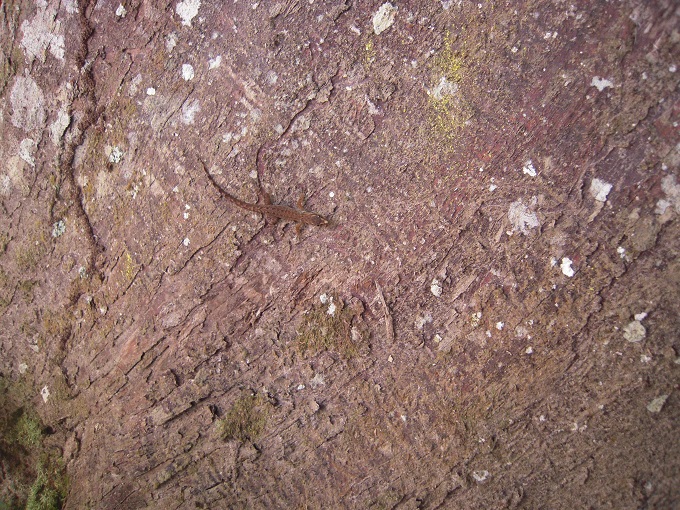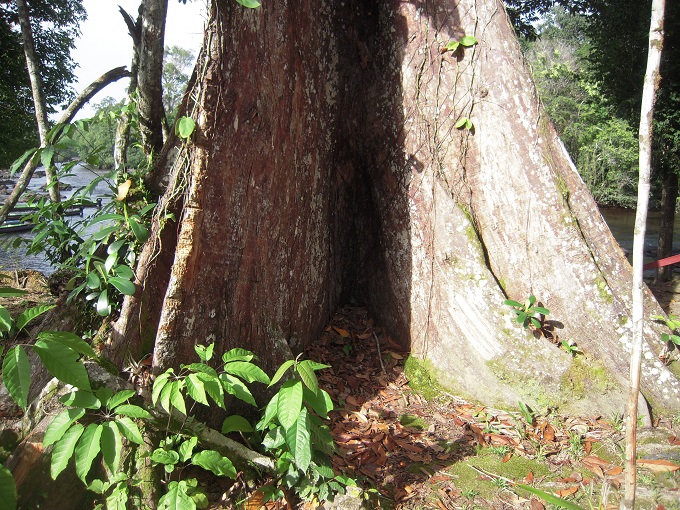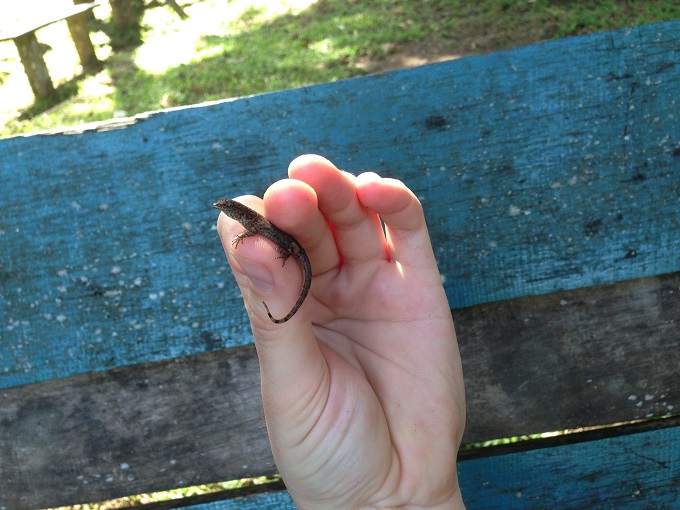SURINAME - Robert Dankers 03-04/2013
Gonatodes humeralis
When I was in Suriname in March/April this year, I was specifically interested in Gonatodes humeralis in situ since I also have this species at home. I did not see this diurnal Gonatodes species in the town of Paramaribo, but more in the forests outside the capital. I first saw them at Berg en Dal: a forested area some 45/60 min drive from Paramaribo. Furthermore I saw Gonatodes humeralis at Brownsberg National Park and Anaula Resort (near the centre of Suriname). It's here where my field observations took place. I mainly saw females of these Gonatodes. Males seem to be less around, or less in sight for men. I saw males somewhat higher up in the trees.

Gonatodes humeralis male
The females forage lower. These geckos seem to like large and thick trees where they can hide under the roots and crevices.

Thick trees with their big roots offer to geckos a lot of hidding places

Female sitting on tree root
When they see a human they run. Funny, because I did saw these animals near human settlements at the Anaula reserve and the Brownsberg NP. At the Brownsberg NP I saw these geckos living near and on a wooden bench near human settlements. I did not see these animals forage higher then 1.5/2 meters from the ground. They seem to prefer the lower regions of the trees. When it rains you won't see these small geckos. I'm not really sure they bask in the sun, but I don't think so or very less. When I caught one female, she let loose of her skin at her upper leg. These geckos are delicate and fragile.

Caught female

Female with loosen skin
Other inhabitants of the lower regions of the trees are large spiders, beetles, ants and other small insects. Since these animals are day active I do not expect them to be hunted down by predators like large spiders, snakes and Rhinella marina. I would not be surprised these geckos are eaten by birds and larger lizards.
Food: I think their main food would be ants, flies and other small insect that live on the trees. Since there is a large variety of invertebrates in the South American forests they seem to eat a large amount of different insects.
Unfortunately, I did not saw Gonatodes annularis. They occur in more dense forest where are no humans present.
© 2014 Robert Dankers